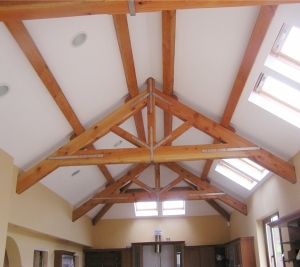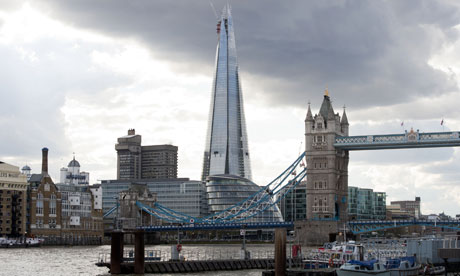JP Corry is launching a new website in February, designed with you in mind. The website offers many services tailored to meet the needs of its visitors. It is split into 4 sections – Trade, Architecture, Self Build and DIY – and addresses the needs of those particular customer groups. It features ‘How to’ videos, information on seminars and training available through JP Corry, the JP Corry blog, a full list of products available and a dedicated CPD zone for architects, specifiers and other industry professionals. Watch this space!
Tag Archives: architecture
Specialist Engineered Timber Products
In an ever changing market where client expectations are high we are constantly looking for new ideas and applications for our products. Where aesthetics are a priority, feature bolted trusses are one of the most popular choices.
Using heavy timbers connected with a combination of steel and bolts gives the client that traditional look unrivalled by other modern materials. Other products within our range include Laminated Veneer Lumber (LVL), Structural Roof Decking, Laminate Timber Cladding, Timber Frame Walling materials as well as the comprehensive range of structural metalwork.
Download the JP Corry Engineered Timber leaflet by visiting http://www.jpcorry.com/downloads.
For more information please contact Joel Ferguson on 07747 477481 or email joel.ferguson@jpcorry.co.uk.
View from the top
Throughout history a sign of your wealth could be determined by how high your house was built off the ground. Although public opinion as changed over the past few centuries along with our landscape, technology and communities, there is still a growing interest in constructing ever taller buildings.
The latest addition to the London skyline has been the Shard skyscraper, opened just under a month before the 2012 Olympics. The Shard, which has been funded by the Qatar National Bank, reaches the dizzying heights of 310m (1,016ft). It is 87 storeys high and is one of the tallest buildings in Europe. It is hard to imagine when you consider some of Ireland’s tallest buildings such as The Elysian in Cork (71m) and the Obel Tower in Belfast (85m).
Although the Shard is by no means tall in comparison to the 828m Burj Khalifa in Dubai, the dominating London skyscraper can still be seen from afar. Over the past 50 years buildings have been constructed higher and higher, causing cities to become more densely populated and earn higher land values however, these towering buildings can create a huge number of construction plan and design issues.
Architects need to consider if the building will cause huge shadows or if they will be aerodynamic. Fast winds hitting a skyscraper can cause the building to physically sway as pressure upon the building increases the higher you go. These fast winds can then flow down the side of the tower causing strong gusts at street-level. The subsequent micro-climates can create a large danger to pedestrians. The Shard has overcome these problems with its tapered design created by architect Renzo Piano and the fact that it is situated on the south bank of the Thames meaning the shadows are cast mostly onto open water or over office blocks.
With regard to constructing the Shard it was undoubtedly a difficult undertaking and some of the lengthy building supply requirements included:
- 11,000 panes of glass
- 306 flights of stairs
- 44 lifts
- 72 habitable floors consisting of retail units, offices, gardens, restaurants and a hotel
There are also 10 luxury residences on the 53rd to 65th floors which have 360-degree views of London. The public will be able to experience these views at the public observation galleries on the 68th to 72nd floors recently opened.
The Shard was constructed from materials that are 95% recycled and 20% of the steelwork is from recycled sources. The glazing system means that the structure is very energy efficient. It uses a triple glazing skin as well as sun screens that provide shade to the glass in hot weather but also allow the building to be naturally warmed by the sun on cooler days.
Undoubtedly, it is a construction and planning success having coordinated so many tradesmen and materials. As well as that the building could soon become an icon on the London skyline to rival Big Ben and the London Eye. The question is, would you want to actually live near such a large building or in fact in it? Do you think the observation gallery ticket costs are ridiculous or worth it? Should we be considering a similar building to be designed in Ireland that would garner iconic status and create jobs?
Either way, if you are visiting London for the Olympics it may be worth visiting The Shard. Even if you don’t want to pay the admission fee it still looks quite impressive from the outside.
JP Corry supplied cubicle systems, vanity units and integrated panel systems for both The Elysian and the Obel Tower. For more information on JP Corry washroom solutions or any other products visit www.jpcorry.com.
Information Sources
http://www.bbc.co.uk/news/uk-england-london-18716658
http://www.bbc.co.uk/news/magazined-18438604
http://www.guardian.co.uk/uk/2012/jul/05/23-facts-about-the-shard
http://www.guardian.co.uk/uk/2012/jul/05/the-shard-unveiled-london?intcmp=239
http://www.guardian.co.uk/theguardian/shortcuts/2012/jul/05/is-shard-view-worth-it?intcmp=239
http://www.cdwmltd.com/focus-on-the-shard/
Picture Sources
http://www.bbc.co.uk/news/magazine-18438604
http://www.guardian.co.uk/artanddesign/2012/jun/13/shard-renzo-piano
http://images.propertypal.com/accounts/ST1110201/propertyImages/127816/1044500_large.jpg




